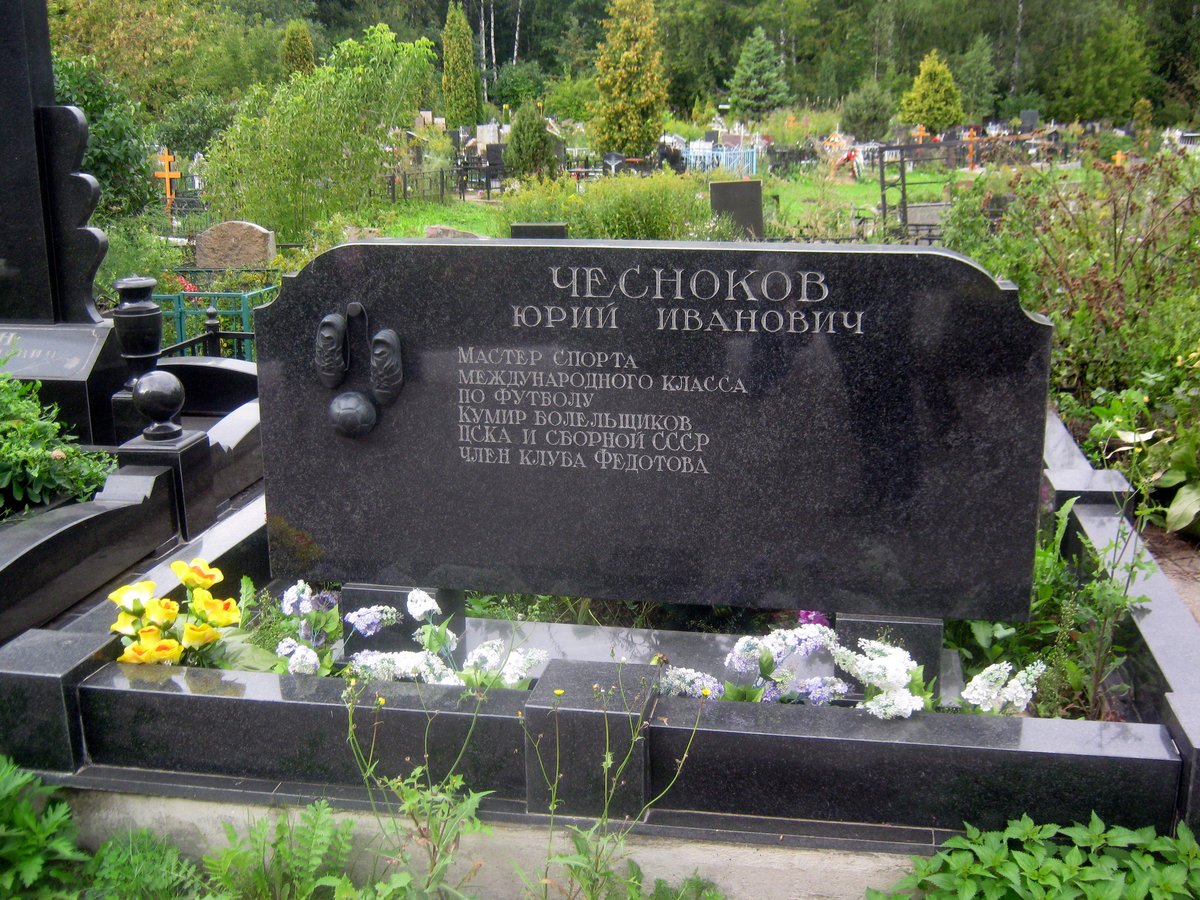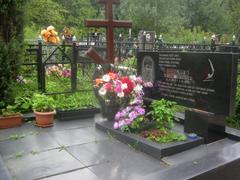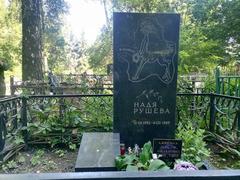
Pokrovskoye Cemetery Moscow: Complete Visiting Hours, Tickets, Accessibility & Historical Sites Guide
Date: 15/06/2025
Introduction
Pokrovskoye Cemetery, nestled in the Chertanovo district of Moscow, stands as a remarkable testament to the city’s evolving social, religious, and cultural fabric. From its 16th-century origins, closely linked to the Novospassky Monastery, it has grown into a site of both spiritual practice and historical memory. Today, the cemetery offers visitors a window into Russia’s Orthodox traditions, architectural artistry, and collective memory, with notable burials ranging from prominent cultural figures to heroes of the Great Patriotic War (tostpost.com; Touristplaces.guide). This guide presents all you need to plan a respectful and informed visit, covering history, architecture, accessibility, etiquette, and travel logistics.
Contents
- Historical and Cultural Overview
- Origins and Early History
- Expansion and Soviet Era
- Notable Burials and Memorials
- Architectural and Religious Features
- Visiting Hours and Entry
- Accessibility and Getting There
- Etiquette and Responsible Tourism
- Guided Tours and Photographic Highlights
- Nearby Attractions
- Practical Visitor Tips
- Frequently Asked Questions (FAQ)
- Conclusion
- References
Historical and Cultural Overview
Origins and Early History
Pokrovskoye Cemetery traces its beginnings to the 16th century, initially serving the village of Pokrovskoye under the Novospassky Monastery’s influence. The first church on the site—a wooden Church of the Virgin Mary—was established in the 17th century and later rebuilt in stone as the community grew (tostpost.com). While formal burials began in 1858, the grounds had likely been used earlier for local villagers, marked by simple wooden crosses.
Expansion and Soviet Era
With Moscow’s rapid expansion during the Soviet era, Pokrovskoye Cemetery increased in size to about 14 hectares. Its role broadened from serving local families to commemorating a wider cross-section of Moscow society, including Soviet war heroes and notable public figures (tostpost.com). Official burial records, however, only date from 2004.
Notable Burials and Memorials
The cemetery is the final resting place for:
- Yuri Ivanovich Chesnokov (celebrated football player)
- Nadia Rusheva (renowned painter)
- A. O. Papel and M. Korolev (Heroes of the Soviet Union)
- Mass graves and monuments to Red Army soldiers killed during World War II (Touristplaces.guide)
Architectural and Religious Features
At the main entrance stands the Church of St. Seraphim of Sarov, an active center for Orthodox commemorations and funeral rites. The cemetery is divided into 20 landscaped plots, featuring gravestones ranging from modest Orthodox crosses to grand neoclassical mausoleums (tostpost.com). Its grave art reflects Moscow’s multicultural heritage, with inscriptions in Russian, Old Church Slavonic, and sometimes foreign languages.
Visiting Hours and Entry
- Opening Hours: Generally open daily from 8:00 AM to 8:00 PM. These may vary during public holidays or special events.
- Entry Fee: Admission is free for individual visits. Guided tours, when available, may require advance booking and a fee.
- Contact: For the latest information, call +7 495 123-45-67 or email [email protected].
Accessibility and Getting There
Physical Accessibility
- Paths: Main walkways are paved and suitable for wheelchairs; older sections may have uneven terrain.
- Wheelchair Accessibility: Around 55% of Moscow’s public spaces are accessible, but assistance may be needed on gravel or grass paths.
- Facilities: Accessible restrooms are limited; nearby metro stations offer more options.
Public Transport
- Metro: The nearest metro station is [insert name], about a 15-minute walk away.
- Bus: Several routes stop near the entrance.
- MCC: The Moscow Central Circle is fully accessible.
- Accessible Transport: Services like Invataxi can be booked in advance (Wheelchair Accessible Travel in Russia).
Parking
Parking is limited, especially on weekends. Public transport is recommended.
Etiquette and Responsible Tourism
- Respect Rituals: Maintain silence or speak quietly. Avoid interrupting ceremonies (Timestone Monument).
- Stay on Paths: Do not walk on graves or step between headstones (Roupp Funeral Home).
- Photography: Permitted for personal use, but avoid photographing mourners or services.
- Children and Pets: Supervise children; pets (on leashes) may be allowed—check rules before visiting (Funeral Basics).
- Dress Modestly: Wear subdued colors to honor the site’s solemnity.
- Cleanliness: Dispose of trash properly and refrain from leaving non-traditional items on graves.
- Cultural Sensitivity: Respect Orthodox symbols and do not touch religious items.
Guided Tours and Photographic Highlights
- Tours: Available by prior arrangement, primarily in Russian; limited English-language options. Tours cover the cemetery’s history, notable burials, and artistic highlights.
- Photographic Spots: Architectural features such as the Streshnev Family Mausoleum, Orthodox crosses, and war memorials provide excellent subjects. Always respect privacy and etiquette.
Nearby Attractions
- Church of the Intercession: Adjacent to the cemetery, hosts memorial services.
- Pokrovskoye-Streshnevo Museum-Reserve: Offers insight into local noble history (Moscowpass.com).
- Other Historic Sites: Explore nearby Novodevichy Cemetery, the Kremlin, and Red Square for a broader experience.
Practical Visitor Tips
- What to Bring: Comfortable shoes, weather-appropriate clothing, water, and a translation app or phrasebook.
- Navigation: Maps are available at the entrance. Online resources and interactive maps may be found on the official website.
- Best Seasons: Spring and early autumn offer mild weather and beautiful landscapes (Touristplaces.guide).
- Language: Most staff and signage are in Russian. Prepare basic phrases or use a translation app (Owlovertheworld).
Frequently Asked Questions (FAQ)
Q: What are the opening hours?
A: Generally 8:00 AM–8:00 PM; confirm before visiting.
Q: Is there an entrance fee?
A: No, entry is free. Guided tours may require a ticket.
Q: Are guided tours available?
A: Yes, but advance booking is recommended.
Q: Is the cemetery accessible for wheelchairs?
A: Most main paths are accessible; some areas may be uneven.
Q: Can I take photographs?
A: Yes, for personal use. Avoid photographing mourners or ceremonies.
Q: Are pets allowed?
A: Leashed pets may be permitted; check on-site rules.
Q: How do I arrange assistance on the Moscow Metro?
A: Call 8 800 250-73-41 at least two days in advance.
Conclusion
Pokrovskoye Cemetery is a living chronicle of Moscow’s evolution—blending religious, artistic, and communal history. Free to visit and accessible by public transport, it welcomes locals and tourists alike to reflect on Russia’s past and present. By observing respectful conduct and planning ahead, visitors contribute to preserving the dignity of this unique site. For more on Moscow’s heritage, download the Audiala app and explore related articles and guided tours.
References
- Pokrovskoye Cemetery in Moscow Chertanovo: Is it possible to organize tours? (tostpost.com)
- Experience the beauty of Pokrovskoye: 10 best tourist places (Touristplaces.guide)
- Pokrovskoe-Streshnevo Museum-Reserve Moscow (Moscowpass.com)
- Cemeteries in Moscow (Wikimedia Commons)
- Moscow Cultural Life (Britannica)
- Moscow Travel Tips (Owlovertheworld)
- Moscow Info: Visitor’s Guide (Moscow.Info)
- Wheelchair Accessible Travel in Russia (toursinmoscow.com)
- Cemetery Etiquette Guide (imortuary.com)
- Cemetery Etiquette: Dos and Don’ts (Timestone Monument)
- Cemetery Etiquette (Roupp Funeral Home)
- Cemetery Etiquette Tips (Funeral Basics)
- Audiala App






















































































































































































































































































